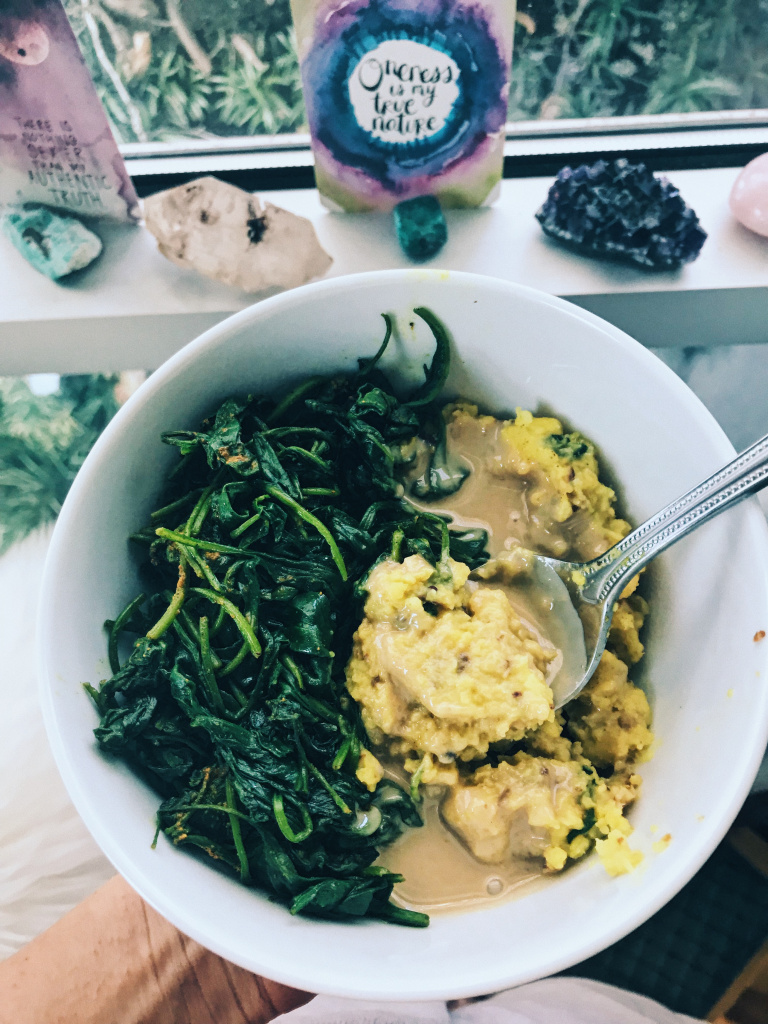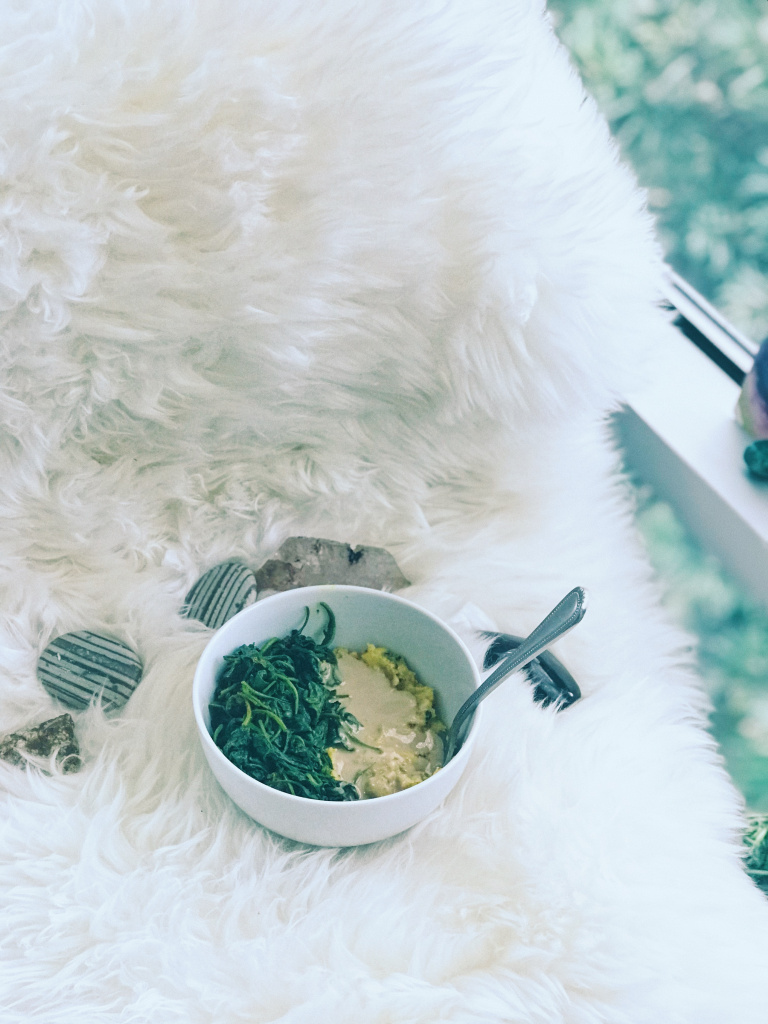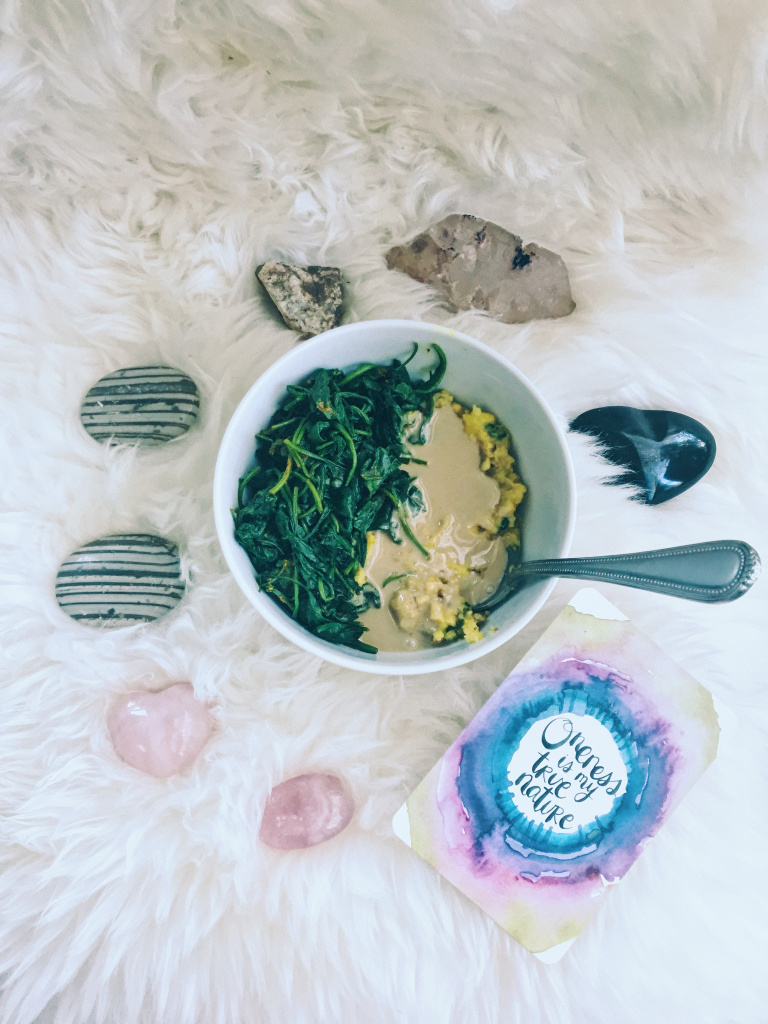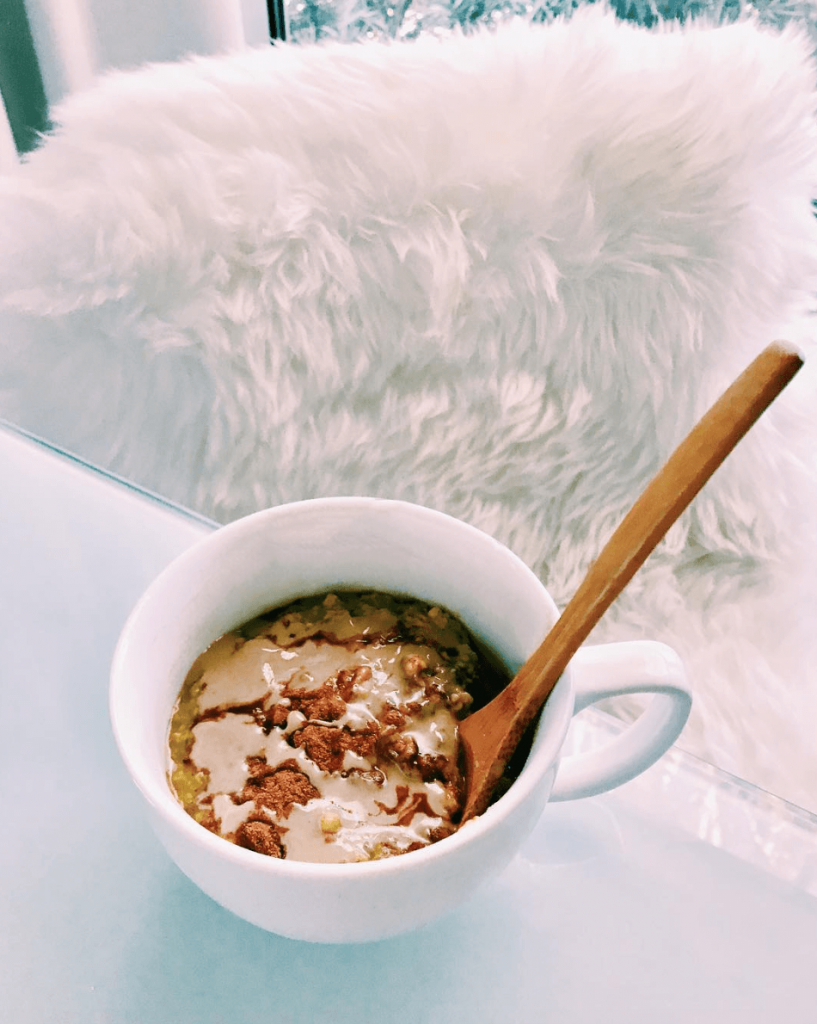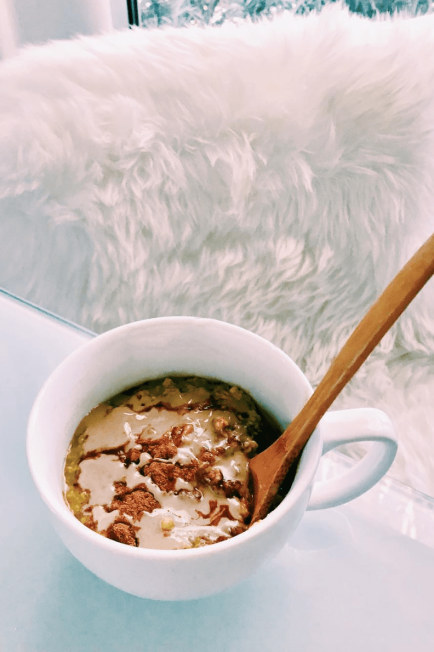
Hi babes!
Thank you so much for the outpouring of love on my water fasting post from yesterday. Water fasting to heal from true physical ailments and health concerns is one of the most beautiful, effective healing modalities I have found for myself personally, although we are all different which I love.
As usual in cyberspace, there will always be judgment. There will always be the other side of the equation and a different opinion. I am good with that, because after sharing my life online for five years… I am very, very, very used to it!
At the end of the day I know that someone who feels the need to shove their differing opinion down a stranger’s throat (or anyone’s throat, for that matter) is suffering in ways I may not know or understand. Their language comes from a place of true distress and unhappiness.
If you too deal with negativity from others when making your OWN (key words… your own) personal lifestyle choices, just remember that their negativity has everything to do with them and pretty much zero to do with you. It helps us remember that we are all human. 🙂 I love this post by The Southern Yogi addressing such negativity so eloquently… preach, sista!!!
Quick update on that front… I feel amazing after yesterday’s water fast! Today I woke up, had my olive oil (for my liver), gave myself a coffee enema (post to come on this soon), drank a lotta water, and had a big, delicious bowl of KITCHARI to ease back into eating today. Food has never tasted so good. 😉
But no matter what, kitchari always tastes ridiculously amazing. And it’s high time I share my go-to recipes with you guys, because I share photos on Instagram all day long and get asked super frequently to share how to make it, and what it’s good for!
So let’s dive into it!
What is kitchari, and why is it good for you?
Kitchari is a traditional Ayurvedic cleansing food, and can also be enjoyed (very much so) outside of a kitchari cleanse. It is a combination of split mung beans (I like the yellow mung daal, because it’s mushy and soup-like versus the traditional longer green mung beans you would usually find in the store) and white basmati rice, with a plethora of delicious nourishing and anti-inflammatory spices like turmeric, mustard seed, coriander, cumin, ginger, and mineral salt. The spices make the kitchari not only bursting with flavor, but also highly nutritious and detoxing.
As far as why it’s so amazingly nourishing and good for us! First of all, kitchari is very easy to digest which is a huge plus for those of us who suffer from stomach issues and gastrointestinal distress. It is tri-doshic, meaning that no matter what your Ayurvedic dosha is (kapha, pitta, or vata), you can handle kitchari and digest it well. If you are wondering what your dosha is, my friend Sahara has a great quiz on her website. I am a pitta, through and through!
The combination of rice and mung daal provides all the amino acids needed to form a complete protein. Eaten on their own, each of these foods is missing one or more of the essential amino acids that our bodies are not able to make on their own. But together they make magic happen! The protein content of kitchari supports stable blood sugar levels so that energy and mental clarity are balanced during the cleansing process.
I love kitchari for detoxing because it is substantial enough to get me through the day with ease, I can do light exercise, add veggies and healthy fats into the mix for extra nutrients and deliciousness, I can meal prep it and it lasts for DAYS, I can travel with it, and most of all… because my gut and digestion feel better eating kitchari than anything else I have ever experienced!
The dish improves our digestive fire (called agni in Ayurveda) because it is warming to the gut, which keeps our digestive system fueled to keep things moving. Good, balanced agni means we are able to digest, assimilate, and absorb nutrients from our food. Weak or imbalanced agni means malabsorption and accumulation of ama, or toxins.
Since mung daal is astringent (which basically means dry) it has the quality of pulling toxins and toxic build up from the system so that it can be released. That is why coffee enemas (or any type of enema) often go hand in hand with an Ayurvedic Panchakarma — because the toxins are being assimilated to the colon and are ready to be released.
It is also what we call in yoga a “mono diet”! When you are eating one thing for a period of time (again, for healing — not just in your regular day to day life because that would become unhealthy) the gut is able to rest and repair. There isn’t a whole lot of other stuff going on in the digestive system so your body can break down the one type of food you are fueling it with.
What is the difference between eating kitchari for a meal, and doing a kitchari cleanse?
The kitchari cleanse I described above is something that people do for many reasons. It’s what you eat during a Panchakarma detox for all of the detoxifying, nourishing, and healing properties. People also turn to kitchari when they are sick to bring it back to the basics, and also to heal the gut lining.
That “cleanse” can be done for however long or short you’d like. A day, 3 days, 5 days, a week, 2 weeks… some people do Panchakarma treatments for over 40 days and eat kitchari the whole time for every meal. I personally eat it every day, but I also add in a variety of veggies, fruits, and other legumes to keep my body satiated and give it variety.
If you just want to eat kitchari for dinner or for breakfast / lunch… go for it! It’s amazing for you regardless of whether you want to embark on any sort of mono diet with it.
To begin with, I recommend simply incorporating it into your routine because it’s delicious, especially if you are healthy and vibrant as is!
For those of us who suffer from health problems and digestive issues… the cleansing and detoxing aspect of it can also be beautiful. I would recommend searching for an Ayurvedic practitioner in your area to get started if you’re looking to do a kitchari cleanse. I only know of practitioners in LA, which you can find in all of my Panchakarma posts on the blog, but wherever you live… Google Ayurvedic doctors and see what pops up!!
Now… the recipes! Woo!
The below is my staple kitchari recipe that I make almost daily. It’s ridiculously easy, especially when you buy the below ingredients from Banyan Botanicals linked below (or anywhere, but this is the place I love and trust!)
MY SIMPLE KITCHARI RECIPE //
Yields 2-3 servings
INGREDIENTS //
+ 1 cup basmati rice OR 2 cups cauliflower rice (which you can easily find at Whole, Foods, Erewhon, etc. or make on your own. It is up to you whether your body assimilates rice well or not. I like to do 1/2 cup rice, 2 cups cauliflower rice!)
+ 1/2 cup mung daal
+ 3 teaspsoons kitchari spice mix (or you can buy the spices individually: mustard seed, turmeric, mineral salt, cumin seed, ginger)
+ 2 tablespoons ghee
+ 6 cups water
+ 1 – 2 cups chopped vegatables (optional) — I like to use broccoli, cauliflower, and carrots!
+ optional toppings: tahini, lemon, cilantro, or a dash of full fat coconut milk
METHOD //
+ in a medium saucepan or pot warm up the ghee, and then add the kitchari spice mixture and sauté for a couple of minutes
+ add in the rice and mung beans and sauté for another couple of minutes
+ then add 6 cups of water and bring to a boil
+ reduce heat to medium-low, cover and cook until it is soft and tender (about 30-45 minutes)
+ if you are adding veggies, add the longer cooking veggies like broccoli, cauliflower, carrots, or beets about halfway through; then add shorter cooking veggies like leafy greens near the end
+ add more water if needed (the beans and rice really soak that water up!)
+ the consistency will either be a vegetable stew or more of a rice/mung bean mush (I prefer the mush! If you prefer stew add more water or even a dash of organic veggie broth)
+ garnish with fresh cilantro, lemon, and/or tahini and/or full fat coconut milk (not all of the above, pick and choose! Tahini is my FAVE)
+ sometimes I top it with additional veggies when I am feeling it. Voila, enjoy!
You can also use a MULTIPOT to get the same effect, and soaking the mung beans / pressure cooking them is extremely good for your digestion! Go here to check out Mealthy’s take on my recipe with their MultiPot that I swear by.
TBB BREAKFAST KITCHARI RECIPE //
The kitchari I make for breakfast is similar to the above recipe, but with more of a breakfast twist. I like to make a breakfast kitchari that is reminiscent of oatmeal — topped with yummy warming and slightly sweet spices.
Keep in mind, you can make one big batch and turn the above batch INTO a breakfast kitchari recipe. You don’t have to make them separately! I like to do this for versatility and it tends to make my meal prep life easier. 🙂
INGREDIENTS //
Yields 2-3 servings
+ 1 cup basmati rice
+ 1/2 cup mung daal OR 2 cups cauliflower rice (which you can easily find at Whole, Foods, Erewhon, etc. or make on your own. It is up to you whether your body assimilates rice well or not. I like to do 1/2 cup rice, 2 cups cauliflower rice!)
+ 3 teaspsoons kitchari spice mix (or you can buy the spices individually: mustard seed, turmeric, mineral salt, cumin seed, ginger)
+ 2 tablespoons ghee (if you are going for the sweeter breakfast variety then I love this Fourth & Heart vanilla bean ghee)
+ 6 cups water
+ 1-2 teaspoons or several shakes of pumpkin pie spice (I love this one)
+ 1-2 teaspoons or several shakes of cinnamon (I love this one)
+ 1-2 tablespoons full fat coconut milk (I love this brand)
+ 1 tablespoon of organic tahini (this one is my go-to because it’s the drippiest, as tahini can often be hardened and I love it more liquid for this recipe!)
+ sometimes I even like to add chia seed or cacao nibs if I am feeling saucy!
METHOD //
+ in a medium saucepan or pot warm up the ghee, and then add the kitchari spice mixture and sauté for a couple of minutes
+ add in the rice and mung beans and sauté for another couple of minutes
+ then add 6 cups of water and bring to a boil
+ reduce heat to medium-low, cover and cook until it is soft and tender (about 30-45 minutes)
+ once fully cooked, add spices, full fat coconut milk, and then top with tahini (optional of course but so delicious. You can also add nut butter if that is what your heart desires!)
+ add any other optional toppings: chia seeds, cacao nibs, nut butter, coconut flakes, goji berries, sliced sweet potato
+ ENJOY!
There you have it, babes! My top two go-to kitchari recipes! I do have a lot more… including a special Valentine’s Day kitchari coming your way. For now, enjoy these, tag me in your photos when you make them so I can see, and hashtag #tbbmademedoit!
And remember, you do not have to be on a kitchari cleanse/mono diet or doing a Panchakarma to reap the benefits of eating detoxifying, anti-inflammatory kitchari in your daily life.
P.S. I am about to kill my computer because every time I type the word kitchari it autocorrects to chitchat! There has been a LOT of undoing and re-typing in this post, LOL. Love you guys! Happy Tuesday evening!








